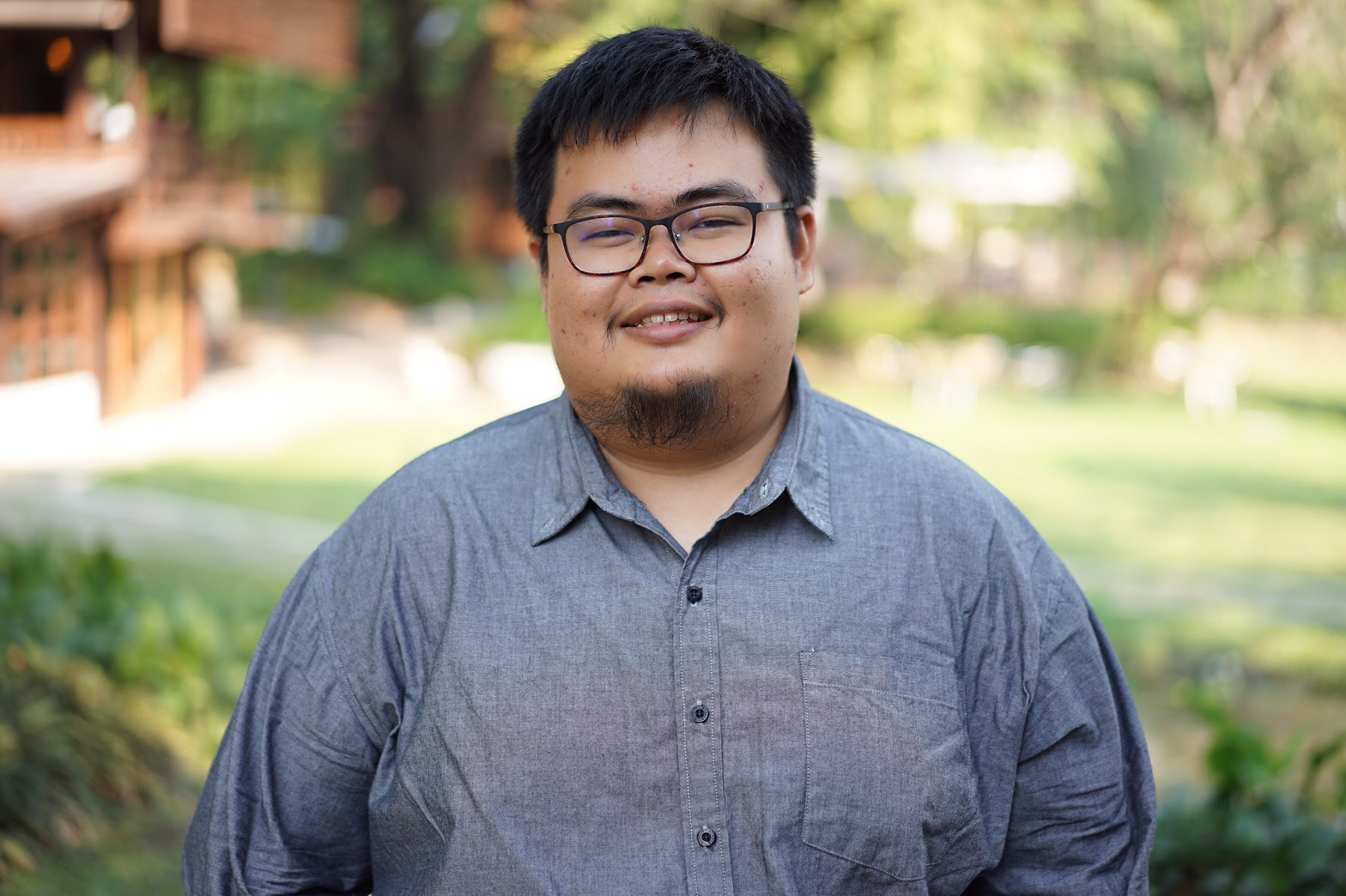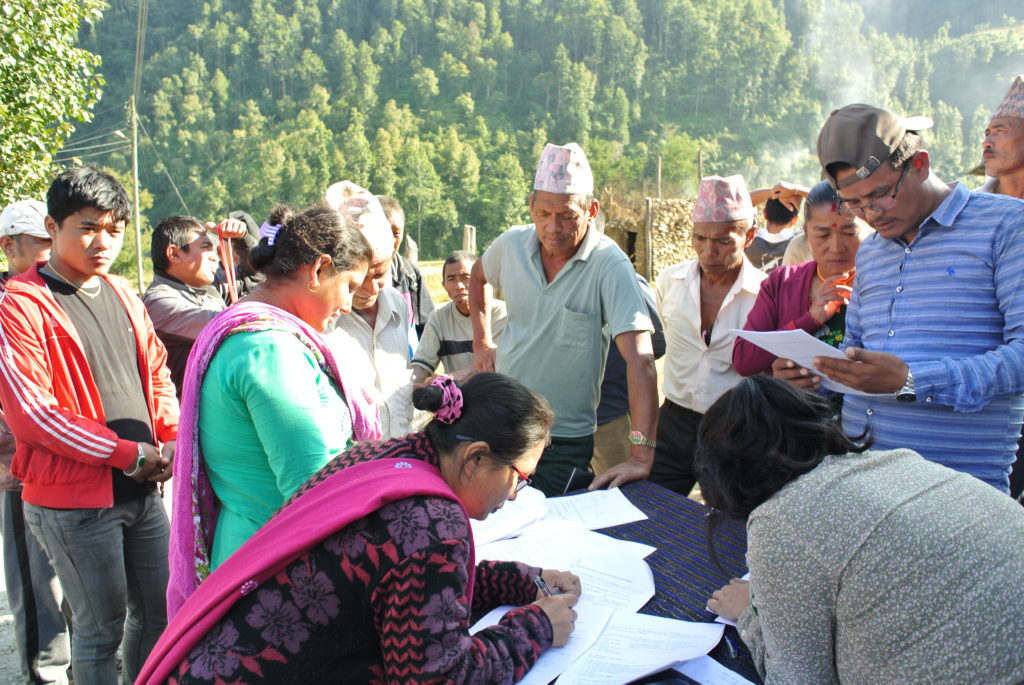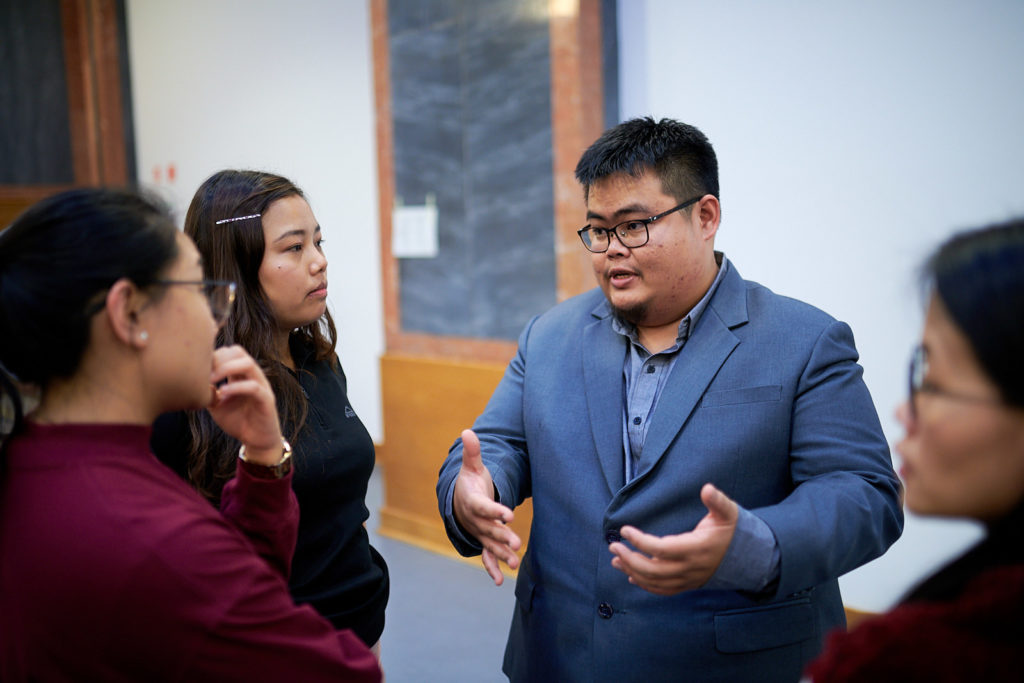News & Blogs
COVID-19, Learning and Putting up a Strong Fight for the Next Generation
“How are things on your end?”, Tom Weerachat asks. A simple question that now carries so much weight.
We are smack in the middle of the COVID-19 pandemic. Most governments have their citizens in some sort of lockdown or have restricted their movements to mitigate the spread of Coronavirus. The situation has been challenging for many, and, as Tom later explains, it has been particularly eye-opening for grassroots justice advocates.
Tom is the Asia-Pacific Program Coordinator for the International Accountability Project (IAP) as well as a community trainer and teacher. He is one of eight 2019 Legal Empowerment Leadership Course Awardees. Recently, I had the honor of chatting with him on Skype. During the online interview, we caught up on his experience at the 2019 Legal Empowerment Leadership Course, his takeaways from it, and how IAP and the communities they serve are continuing to hold the powerful to account despite the pandemic. Tom shared with us his insights, challenges, and — perhaps best of all — an inspiring account of an interaction he had with a woman in her 70s in Nepal, protesting against the development of a hydropower dam in her area.
Note: Some answers have been edited for length and clarity.
***
Tell me about your work at the International Accountability Project.
We are a small, global human rights and advocacy organization that focuses on human rights and community environment. As the Asia-Pacific Program Coordinator for the International Accountability Project, I support local communities and civil society groups to assert their right to information and meaningful participation in development processes. The focus and the history of the organization is on development finance.
Sounds interesting! Do you mind explaining what development finance entails?
There’s this thing I love doing when I conduct workshops. I show an image of a mountain where half the mountain is still green and looks so alive, while the other half is dry with barely any trees. I then ask workshop attendees to give their thoughts on what happened. The common agreement is usually human interference, with development projects taking up most of the blame.
In most cases, governments give a land concession to private companies for development projects such as the setting up of geothermal plants and coal mining. These companies then end up clearing the trees to set up their sites. The sad part is that most of these communities live in a very restricted environment where one cannot criticize their own governing system. The system might be corrupt, or they fear intimidation or victimization.
At IAP, we realized that there were other ways to put pressure on these developmental projects that affect the localities in which they are set up: go after the financial links.
Since it is better to start lobbying before these development projects start in earnest/get off the ground, we have created a system called the “Early Warning System”. Here, we monitor 15 development finance institutions, most of which are multinational banks that operate globally or regionally, such as the World Bank, Asian Development Bank, and African Development Bank.
These financial institutions have an obligation to disclose information on prospective projects. They usually just put these up on their websites. But how will the communities affected by these projects find this information? This is where IAP comes in. We monitor the information being disclosed, standardize it, then try to reach the community that might be affected by these projects and notify them. Do they know about these projects that are supposed to happen in their area? Do they have any concerns? Any questions? We then mobilize to support the community to understand more about what’s happening and what they can do about it. And this is where the legal empowerment work comes in. You see, in most cases, they don’t know that it is their right to react to such development projects and be involved in said projects in the first place.
What is one interaction you’ve had while working with a community that has stayed with you?
There was this time we were working on a hydropower dam project in Nepal. As we talked about the campaign strategies we would take on, we asked the locals if they wanted to continue with the project. There was this woman. She must have been in her late 60s or 70s. She said something like, because I’m going to directly translate it, she said “We will fight. Then if our children see our corpses on this land, they will know we fought for it”. Which to me was powerful. It showed that they were willing to do anything it takes, if not for them, for the next generation.
What, in your opinion, has made IAP efforts successful?
At the heart of the International Accountability Project is that true, impactful change comes from the locals themselves. The first thing we do is ensure that the communities access their right to information, then they can mobilize and organize. We take a community-led approach to training, mobilizing, and developing advocacy strategies. We mobilize communities and help them figure out how they can advocate for themselves using Community Action Guides that we have curated, tried, and tested for years.
The Early Warning System initiative that I mentioned earlier has also helped scale our work in mobilizing and training communities. This initiative ensures local communities, and the organizations that support them, have verified information about proposed development bank-funded projects likely to cause human and environmental abuses, and clear strategies for advocacy – ideally before funding is decided.
It must be challenging going after huge financial institutions especially during a pandemic. How are you handling the challenges?
When COVID-19 happened, what changed was that people could no longer move as much. Our local partners who could go and interact with the communities and hold discussions with them and help them prepare their campaigns and strategies can no longer do this physically, so we had to find alternatives.
We reached out to our local partners to find out what they needed. Some communities pointed out that in order to keep communication channels open, they needed airtime to make calls. For others, it was the urgent provision of PPE.
But the thing is, while the rest of the world is staying indoors, development projects are still ongoing. We know that many mining projects are going on, many dam construction projects are moving forward, they are not pausing at all. We are trying to figure out how to also keep our campaigns going.
Do you think COVID-19 will change how you work with communities even once the pandemic is over?
Absolutely! I think COVID-19 has put things into perspective for us. At IAP, we believe in community-led approaches. The best way for change to happen is at the local level. Why do communities need to bring in people from other regions to help them? We need to think about how to mobilize local resources.
We have talked to a lot of people in-country, identified a resource person, tried to figure out how people can mobilize themselves and what resources they would need in order to do this.
The other thing we’ve been doing at IAP for several years is the use of our Community Action Guides. These are written manuals meant for community members and organizers. While creating these, we weren’t thinking about COVID-19 or the possibility of a pandemic. We were thinking within the context where communities don’t have external support. They don’t know who can help them or are in a very restricted environment where an outsider cannot access the community, can they still organize and mobilize? Now, we really see the value of these resources. The guides can help people during times like this when they don’t have external support. At least they have something they can work with.
It can be hard to imagine a time before COVID, but just a few short months before the pandemic you were at the 2019 Legal Empowerment Leadership Course (LELC.) Can you tell me about your experience?
I absolutely loved the course! Having people come from different places, working on different issues, connecting through a shared goal of improving ourselves to better support and help our communities with their legal empowerment was nothing short of amazing. Everybody was a teacher. We shared what we know with one another, all the time, and it happened so spontaneously.
This course was designed for a participant to share their skills and knowledge. The facilitators did an amazing job by allowing us to exchange and learn from each other and receive feedback. It truly is one of the best courses I have ever attended.
At the end of the course, I had more questions: which is a good thing. As a facilitator and trainer, you want people to go back home with more questions. To think about how they would do better. My fellow participants asked me questions I had never thought of before from their different perspectives. I went back to my team immediately, and we got to brainstorm together. We received so much inspiration from the course and started thinking about how to improve our work, how to bring about more systematic change. The course made us realize that we are trying to achieve something bigger than one case and in order to build that we needed to take a moment and look at the bigger picture.
What was your biggest takeaway from the Legal Empowerment Leadership Course?
(laughs) There were so many!
Seeing the solidarity and commitment of people who didn’t know each other before, become so close. We shared our experiences honestly, allowed ourselves to be vulnerable, and say ‘this is the problem I’m facing”, admitted that we weren’t perfect and were eager to learn. As a result, we got very useful feedback and suggestions. I think that’s the best you can get. Because honestly, when do you ever normally have the chance to have people from different parts of the world —with similar or different experiences — giving you their full attention and supporting you? For me, that’s what was powerful about the leadership course.
Do you have any highlights from the course?
I still can’t believe that this happened to date. Let me tell you a short story.
We were breaking out into small groups and I chose one that was discussing community surveying because I really wanted to learn how other people were doing this. So I get there and a participant from Ukraine was talking about this method and in my head, I’m thinking ‘Oh, this is great’. Then this method starts to become more familiar. We then did some exercise and I realized that is pretty much what we have in our Community Action Guide on Community-Led Research! The presenter then confirms by giving accolades that part of what he had he’d incorporated from our community action guide.
Seeing someone take a resource I had co-authored and use it with confidence, and having other people get a chance to exchange their thoughts and experiences to add onto it, filled me with so much joy. It is exactly what we hoped this community action guide would do: that people would take it, own it and incorporate it into their work to change their communities. That goes to show how powerful the Legal Empowerment Network is because this practitioner found it in your online resource library.
It’s been 8 months since the LELC. How has what you learned impacted your work at International Accountability Project so far?
The course was such an eye-opener. We are currently thinking of ways to improve our work to ensure that we bring about more systemic change. Thanks to the group and question and answer sessions, I also left the LELC thinking about ways we as IAP could not only improve our work but also how to better our community guides and expand their outreach and availability.
In fact, we are currently working on a Community Action Guide on ‘What is Development’ that was informed by my experiences at LELC. I would highly recommend network members to check out once it’s launched. In this guide, you will find tools, activities, and practical tips on how to support communities in claiming their right to development, and clearly identify the obligation of governments and development finance institutions to facilitate the realization of communities’ aspirations for development.
*** Tom and his team launched the Community Action Guide – What is Development in December. You can access it here.
Any tips from your experience in grassroots advocacy that you’d want to share with fellow practitioners?
There is power in working as a collective. We have created regional groups where we lend each other support. As a group, we share resources, skills, and knowledge to help the communities. The beauty of it is that it diversifies strategies to help the community.
This ensures that there is continuity such that if anything happens, and a member of the group has to pull out, the project can still continue.
Last thing, always put the community at the center such that they have all the information and are the main drivers. Work with them as equal partners.




